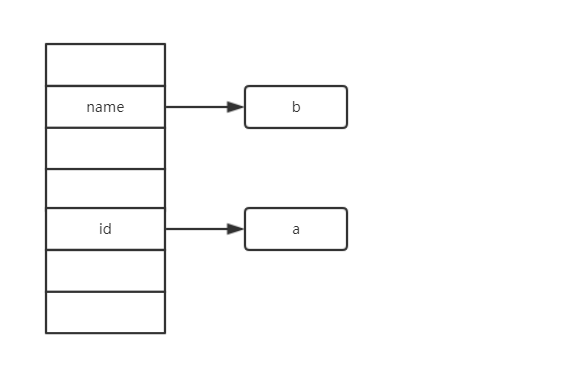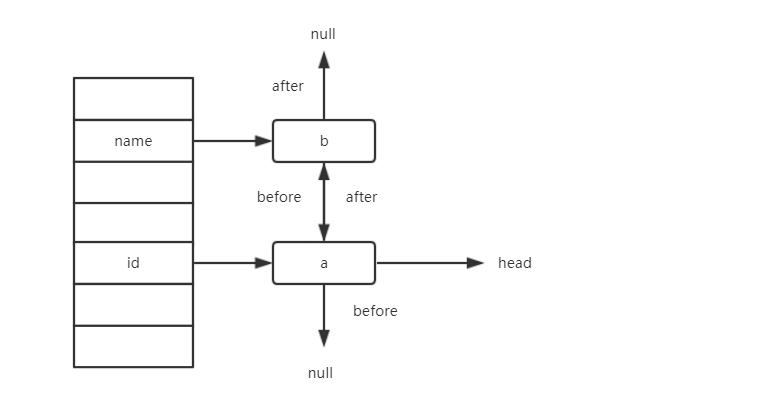Json的底层实现一览
在开始了解Json的原理之前,首先看一段代码,在这里以阿里的FastJson为例。
1 | public class JsonRun { |
当看到上述代码的时候,可能一般的程序员都会想到的是输出为如下Json串
{“id”:”a”,”name”:”b”}
但是运行这段程序,你会发现控制台打印出来的是如下代码:
{“name”:”b”,”id”:”a”}
那么为什么会出现这种情况呢,翻开FastJson的源码便知道了,首先定位到 JsonObject 这个类的构造函数,如下:
1 | public JSONObject(int initialCapacity, boolean ordered){ |
这里的 ordered 为一个构造参数,表示的是是否按照顺序添加,此处先不管,然后可以发现在阿里的FastJson中,其实默认的Json实现是一个Map,那么对于LinkedHashMap来讲,它是一个map和双向链表的整合体,所以在LinkedList中,每一个Node都会有一个前指针和一个后指针
HashMap
LinkedHashMap 是一个HashMap的变种,大家都知道,一个HashMap是由一个桶和一个桶后面的节点组成的,而桶其实是一个数组,每一个桶的索引所对应的值都是由Hash()函数计算得出的。那么这样就会导致桶的元素是一个乱序的存储的,例如在本段代码中的id和name,它们所在的桶索引可能是:
这样就导致了一个问题,就是Json的键的顺序是无法保证的,那么既然HashMap是无法保证的,为什么LinkedHashMap却可以保证顺序。
LinkedHashMap
翻开LinkedHashMap的源码可以发现,在其节点类里面,LinkedHashMap在 HashMap的Entry基础上又添加了一个before和after指针,
1 | static class Entry<K,V> extends HashMap.Node<K,V> { |
那么这两个指针就是双向链表的指针。有了这两个指针之后,每一个新插入的节点都会知道他的前驱结点和后置节点,那么对于LinkedHashMap的插入顺序就会有保证了。所以其对应的数据结构如图:
在这个结构里面,桶索引是id的第一个节点是一个头节点,在新插入name的时候,LinkedHashMap会将head节点的after指针指向name,所以虽然这是一个HashMap,但是它的顺序还是可以保证的。
LinkedHashMap的迭代
区别于HashMap以索引的方式进行迭代,LinkedHashMap是以链表的指针进行迭代的,如以下代码所示:
1 | abstract class LinkedHashIterator { |
可以看到在每一次迭代的时候LinkedHashMap都是以链表的next节点作为下一个迭代,那么HashMap呢?
HashMap的迭代
1 | abstract class HashIterator { |
注意这一段代码
if (t != null && size > 0) { // advance to first entry
do {} while (index < t.length && (next = t[index++]) == null);
}
这一段代码的作用是找出table[]中第一个不为null的桶,所以其实HashMap的迭代就是依据桶中的顺序来的,但是LinkedHashMap则是按找链表的顺序来的。
总结
其实每一个java的设计都是很精妙的…